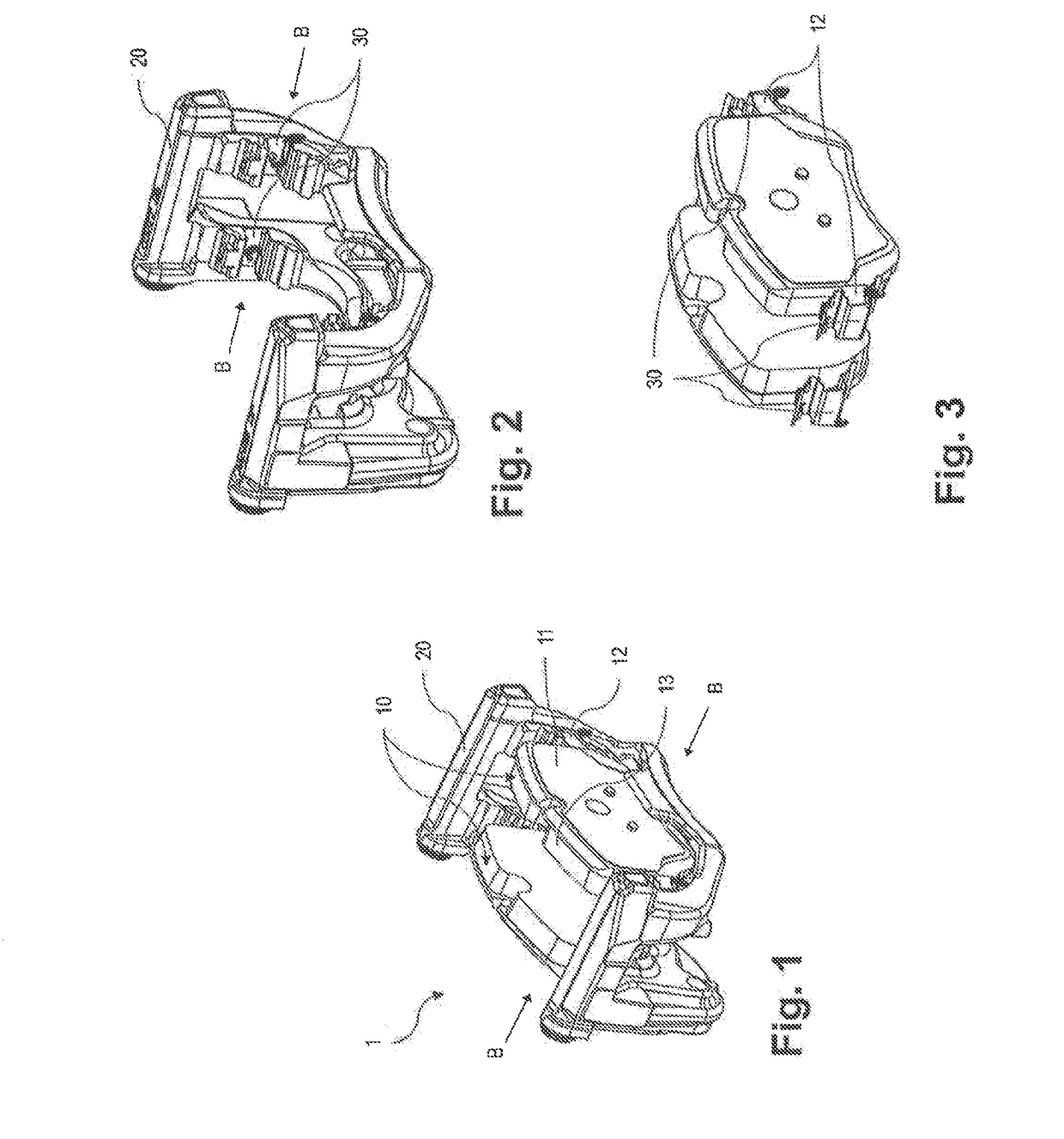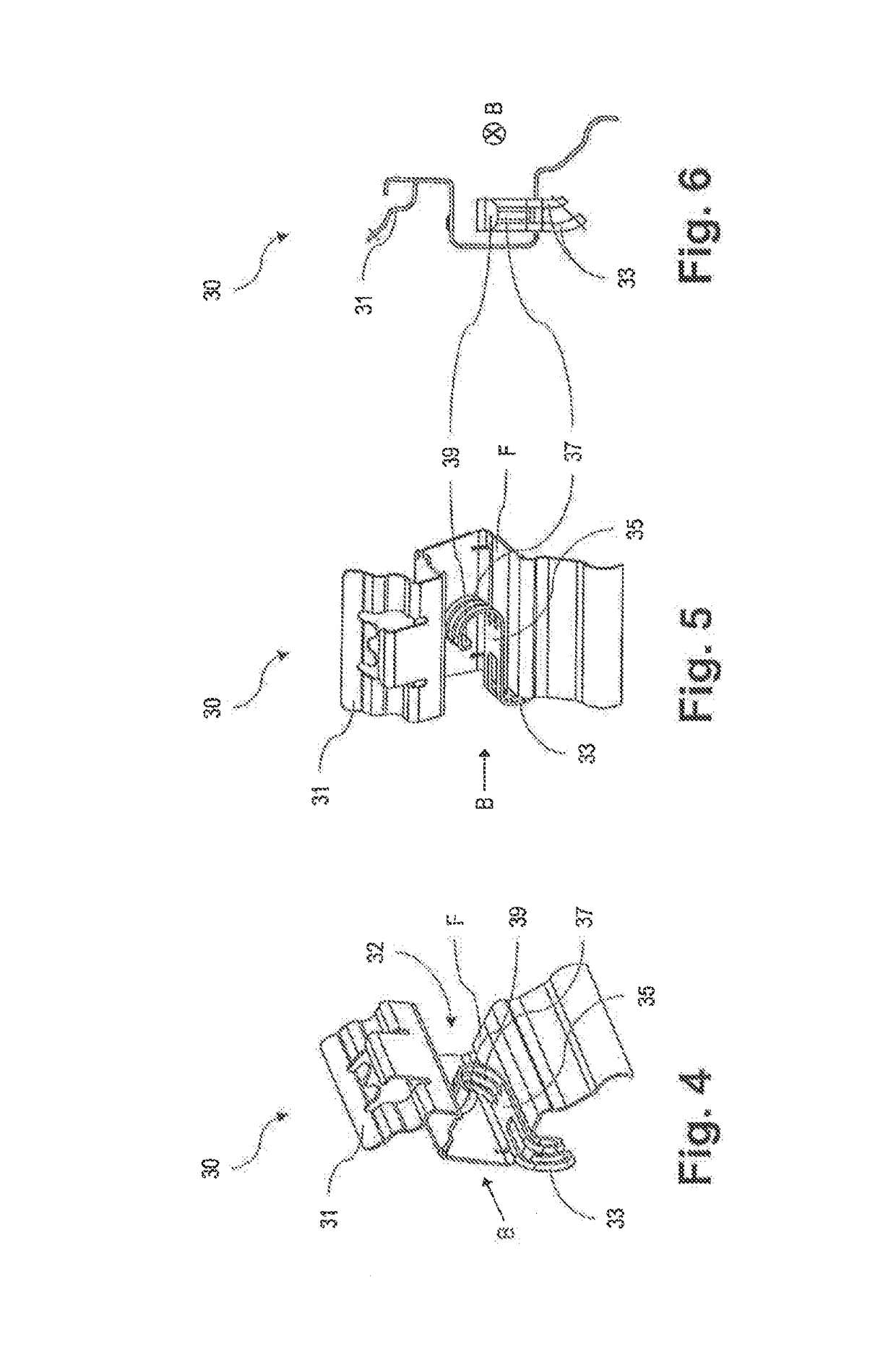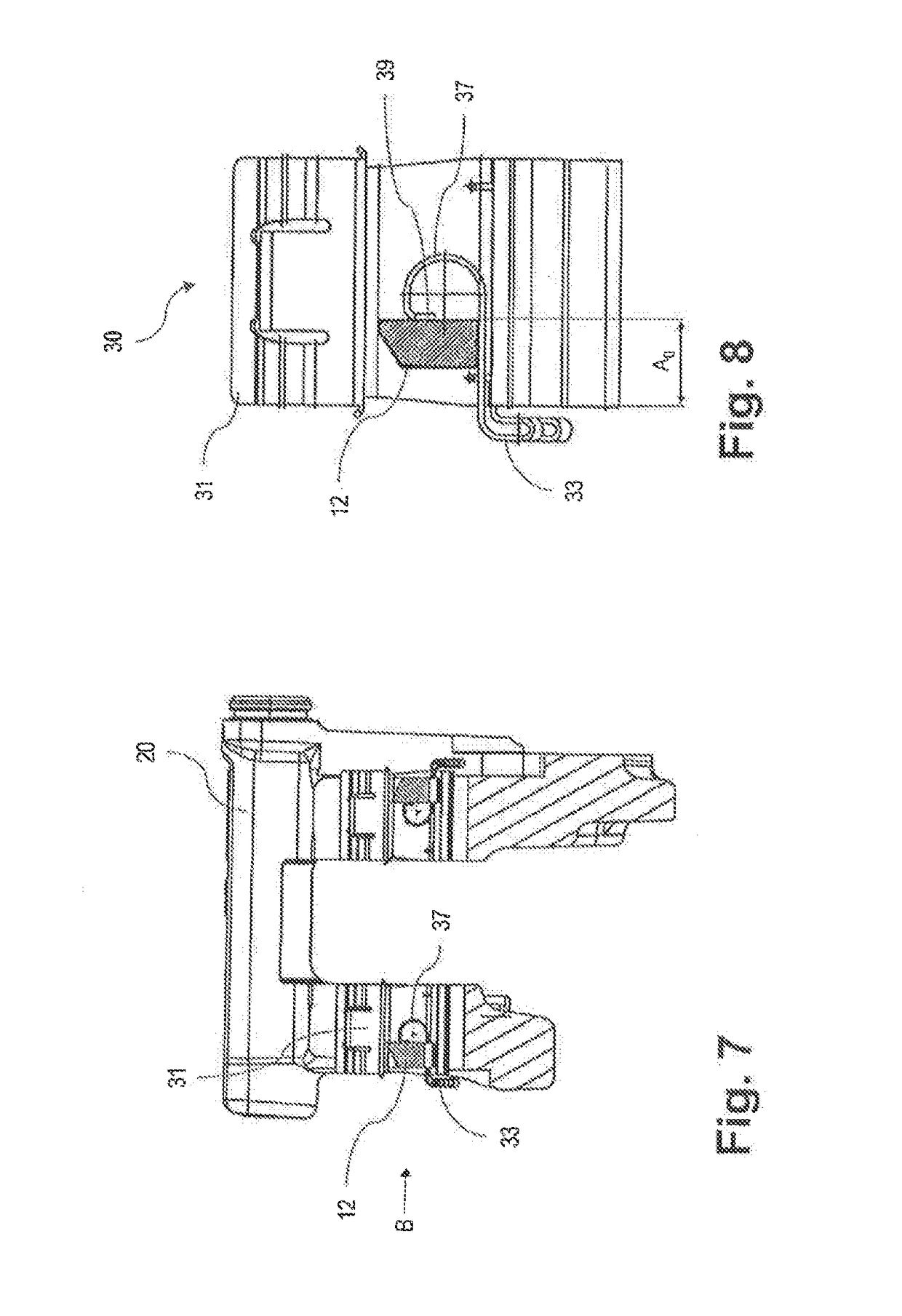Disc Brake For A Motor Vehicle and Brake Pad Assembly Therefor
- Summary
- Abstract
- Description
- Claims
- Application Information
AI Technical Summary
Benefits of technology
Problems solved by technology
Method used
Image
Examples
exemplary embodiment 1
[0041]FIG. 1 shows a disc brake 1 according to the invention for a motor vehicle. Here two opposing brake pad assemblies 10 are to be recognized, which are constructed from a brake pad carrier 11 with lateral retaining tongues 12 and a vehicle brake pad 13. The brake pad assemblies 10 are facing one another on their vehicle brake pad side and are spaced from one another so that a brake disc, which is not shown, can be arranged in between and the vehicle brake pad 13 can be brought into interaction with the brake disc for achieving a braking effect in that the brake pad assemblies 10 are moved in an actuation direction B. This movement in the actuation direction B can be effected in a known manner via a hydraulic actuation mechanism, wherein the brake pad assemblies 10 are held by a brake carrier 20 and are guided movably in a braking manner in this by the retaining tongues 12.
[0042]In FIG. 2 the brake pad assemblies 10 have been removed from the disc brake 1. Here guides 30 formed f...
exemplary embodiment 2
[0052]The second exemplary embodiment according to FIGS. 12 to 17 differs from the first exemplary embodiment in that the reset device has a stop 134, which is able to limit the spring path X of the elastically deformable region 133, so that each further movement of the retaining tongue 12 in the actuation direction B leads to a plastic deformation of the plastically deformable region 137.
[0053]In this context FIGS. 12 and 13 show the two states of the elastically deformable region 133.
[0054]In FIG. 12 no elastic deformation has yet taken place, which is why the entire spring path X (>0) is available, which is measured from the inner face, oriented to the right in the figure, of the stop 134 to the opposite stop point. The guide distance in this resting position, which is measured parallel to the guide surface F from the left edge of the guide surface F, which faces the elastically deformable region 133, as far as the engagement point on the engagement lip 139, is designated by A0.
[...
exemplary embodiment 3
[0057]The third exemplary embodiment according to one of the FIGS. 18 to 21 differs from the second exemplary embodiment in that the reset device, in addition to a stop 234, has two elements M1, M2, which are formed separately but are actively connected to one another in the state shown, wherein one element M1 only has the plastically deformable region 237.
[0058]The reset device shown in FIG. 18 and in FIG. 19 as an enlarged view enables a transition region to be recognized between the elements M1 and M2, wherein the element M1 is hooked into the elastically deformable region 233 of the element M2 by means of a hook and rests on this in the actuation direction B, so that both on actuation and on reset of the brake pad assembly 10, compressive loading and no tensile loading, for example on the hook, prevails. While this exemplary embodiment provides a detachable connection between the elements M1 and M2, an undetachable connection, e.g. due to gluing, soldering or welding, can also b...
PUM
 Login to View More
Login to View More Abstract
Description
Claims
Application Information
 Login to View More
Login to View More - R&D
- Intellectual Property
- Life Sciences
- Materials
- Tech Scout
- Unparalleled Data Quality
- Higher Quality Content
- 60% Fewer Hallucinations
Browse by: Latest US Patents, China's latest patents, Technical Efficacy Thesaurus, Application Domain, Technology Topic, Popular Technical Reports.
© 2025 PatSnap. All rights reserved.Legal|Privacy policy|Modern Slavery Act Transparency Statement|Sitemap|About US| Contact US: help@patsnap.com



